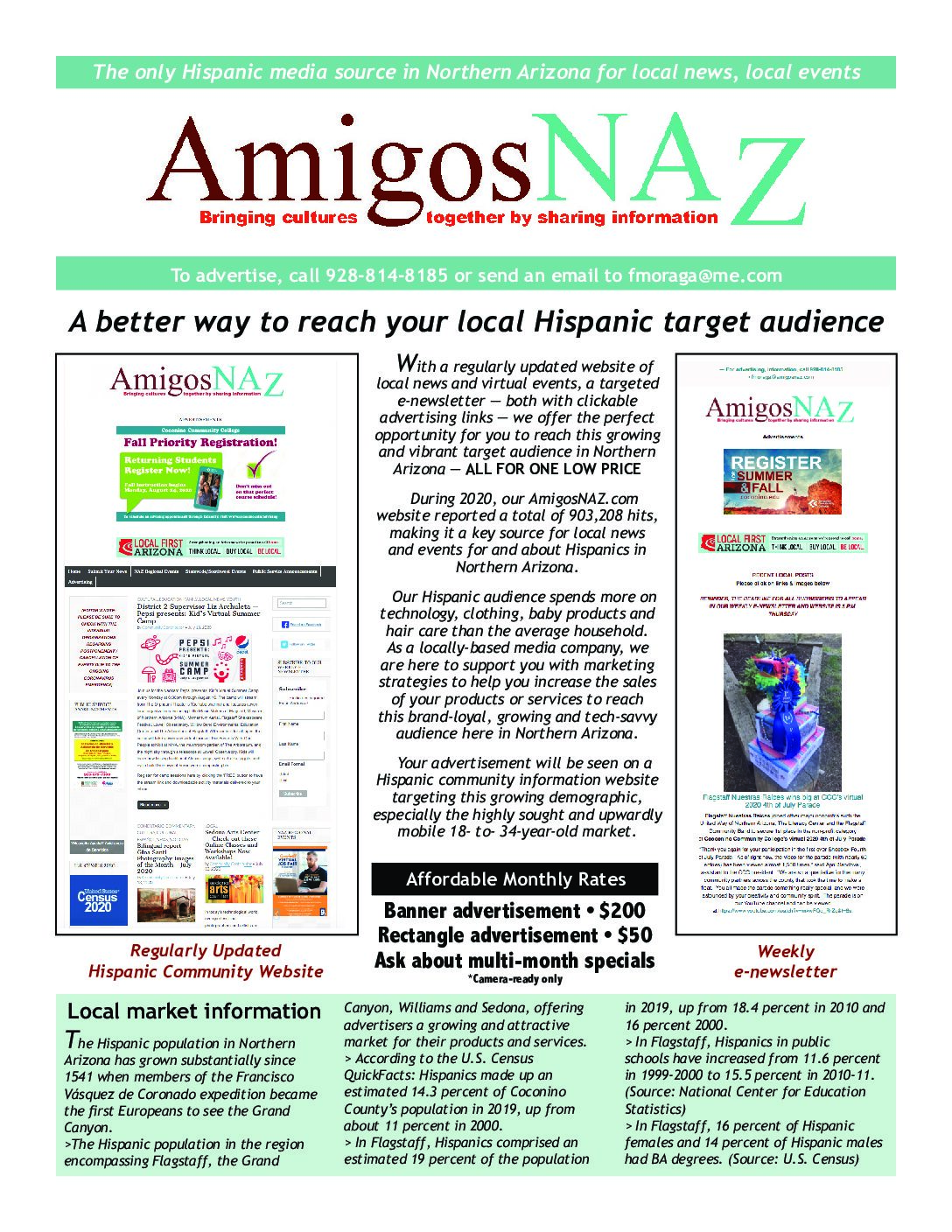
Your advertisement will be seen by a Northern Arizona audience that is approaching 716,000 hits, nearly 30,000 visits and almost 13,000 unique visitors on our website as of Nov. 15, 2023.
Your advertisement will reach an Internet-savvy Latino audience in the 18- to 34-year-old demographic range.
Your advertisement will reach a targeted audience of key local Latino community and political leaders and nonprofit organizations who receive our weekly e-newsletter.
Let www.AmigosNAZ.com help your business or nonprofit organization have a successful 2024. Contact Frank X. Moraga at fmoraga@amigosnaz.com
Read more →